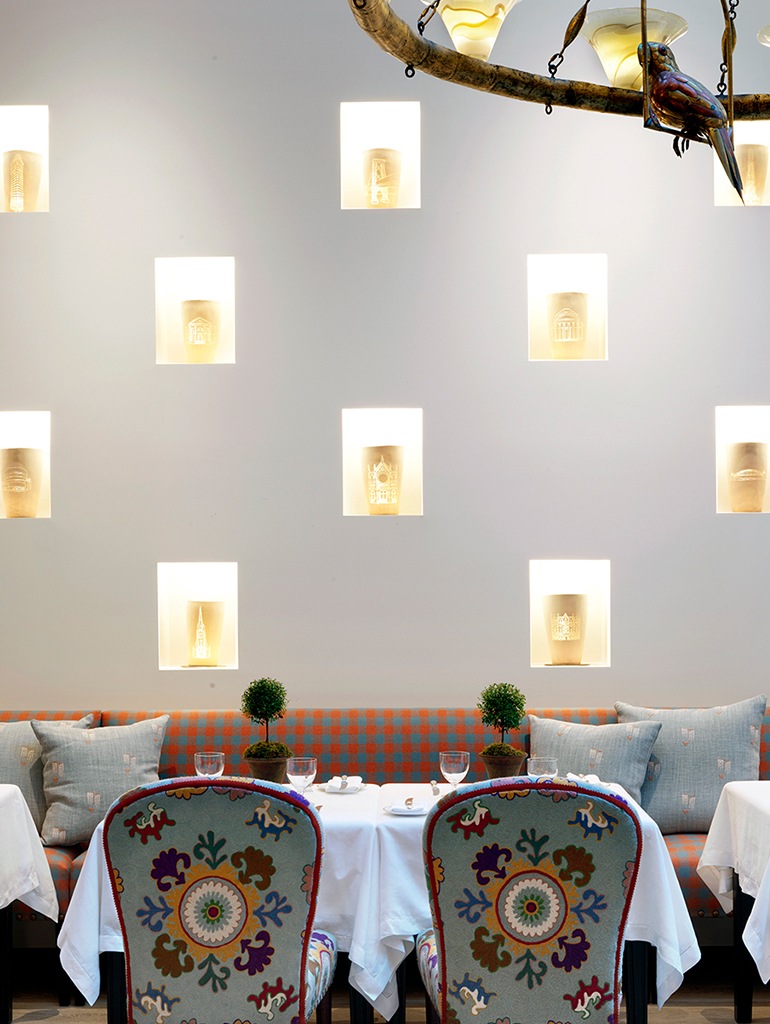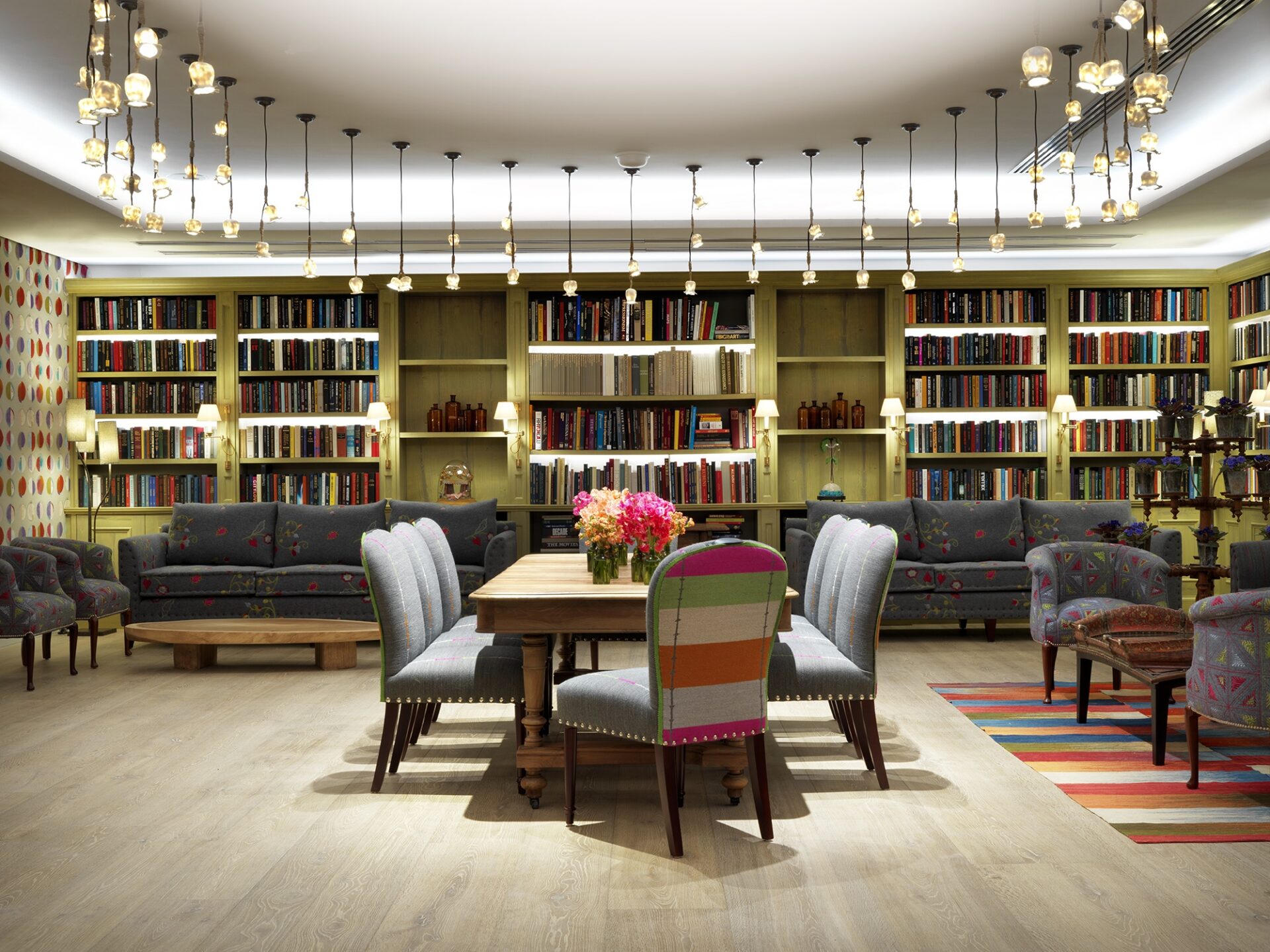Martha Freud is a London-based ceramicist whose delicate glowing pots and pendant lights can be spotted in many of the spaces we have designed in London and New York.
In Ham Yard Hotel, the restaurant could have been a long and dark space but we added dimension and light on the back wall with a delicate collection of pots. Martha’s glowing ceramic pots, inserted into 32 niches on a crisp white backdrop, create a calm wall in a busy room. Each of these handmade ceramic pots is inscribed with an individual leaf design. These are lit up to give a warm glow as you dine below.
In our recently refurbished Potting Shed restaurant at Dorset Square Hotel, we have hung Martha’s beautifully crafted butterfly lights in each of the banquette seating alcoves and in front of the zinc topped bar. In homage to the history of Dorset Square, which was once the site of Thomas Lord’s first cricket ground, we have 192 handmade ceramic pots by Martha, which light up with cricketing sayings, such as “how to cure a cricketer’s red nose, drink ’til it’s purple”, and of course, Richard Bernard’s famous quote, “That’s a contradiction in terms”.
Your pieces are all so different, but have the common thread. How do you take unique ideas and translate them into each piece?
As an artist I try to interpret the essence of my inspiration rather than attempt a realistic representation – I love working with ceramics because it is so adaptable but I like to let the idea dictate the material, rather than the other way round. I enjoy taking an idea from one place and trying it somewhere else to see how it looks from a different perspective.
This week, we caught up with Martha and asked her a few questions about her work:
Where is your favourite place to find inspiration?
I’m a sponge to my environment, so I take inspiration from wherever I am. In nature is always my favourite place to be, ideally a long walk in the woods or on a beach. It is so meditative for me to walk with no purpose and that is when I am most open to being inspired.
When I am in the city for long stretches, then the way humans interact with each other ends up being more of a focus and becomes where my ideas play. I try and take notice when something makes me laugh or positively motivates me as these are the things I want to encourage.
All of your work is made up of beautiful textures and weights, why were you so drawn to clay?
I love working with clay because it can be such a beautifully natural and earthy process. To then contrast the delicate rawness of ceramics with the weight of manufactured steel and to find complementary harmony between these two materials is a theme I keep coming back to – perhaps because it mirrors the challenging balance many of us urban dwellers find ourselves in today.
How do you know when a piece is finished?
I love to re-work pieces and constantly try to grow and challenge myself, each time pushing the materials or technique further to see what can be done, but sometimes it is knowing that the right thing is to stop or strip it back to allow space for personal interpretation. Some projects have taken me years while I develop the right skills to manifest my ideas, while others have happened really quickly.









